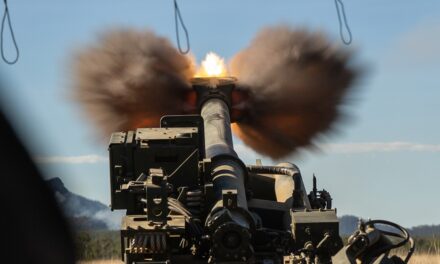We support our Publishers and Content Creators. You can view this story on their website by CLICKING HERE.
Meet the M4 Carbine: Over the course of many years, the U.S. produced hundreds of thousands of battle-tested, upgraded M4A1 rifles engineered to more quickly identify, attack, and destroy enemy targets with full auto-capability, consistent trigger-pull, and a slightly heavier barrel.
The M4AI was the product of an extensive M4 Product Improvement Program, called PIP. The PIP for the M4 was a far-reaching initiative to upgrade the Army’s entire current inventory of M4 rifles into higher-tech, durable, and more lethal M4A1 weapons. An Army weapons developer involved in the PIP project said “The heavier barrel is more durable and has greater capacity to maintain accuracy and zero while withstanding the heat produced by high volumes of fire. New and upgraded M4A1s will also receive ambidextrous fire control,” an Army statement said.
Refining the M4
The Army spent many years converting its fielded M4 carbines to M4A1 carbines; approximately 483,000, Army officials explained. “Most of the enhancements resulted from Soldier surveys conducted over time,” an Army official told Warrior Maven for 19FortyFive.
Over the years, the Army has made more than 90 performance “Engineering Change Proposals” to the M4 Carbine since its introduction.
“Improvements have been made to the trigger assembly, extractor spring, recoil buffer, barrel chamber, magazine and bolt, as well as ergonomic changes to allow Soldiers to tailor the system to meet their needs,” an Army statement said.
Today’s M4 is quite different “under the hood” than its predecessors and the upgraded M4A1 was further refined to provide Soldiers with an even more effective and reliable weapon system, Army statements said.
The M4A1 is also engineered to fire the emerging M885A1 Enhanced Performance Round, .556 ammunition designed with new, better penetrating, and more lethal contours to exact more damage upon enemy targets.
“The M4A1 has improvements which take advantage of the M885A1. The round is better performing and is effective against light armor,” an Army official told 19FortyFive.
Prior to the emergence of the M4A1 program, the Army had planned to acquire a new M4. Numerous tests, industry demonstrations, and requirements development exercises informed this effort, including a “shoot-off” among potential suppliers. Before its conversion into the M4A1, the M4 – a battle-tested weapon, and known for many successes – had become controversial due to combat Soldier complaints, such as reports of the weapon “jamming.”
Continuous Upgrades for the M4
For many years, the Army upgraded and improved its M4, with some plans never passing the conceptual phase. All of the progress, however, has informed the Army’s current weapons. There has continued to be ongoing work to ensure the weapon is upgraded and maintained to the maximum extent.
As many as four to five years ago, the Army did conduct a “market survey” with which to explore a host of additional upgrades to the M4A1; These previous considerations, which were performed under a program called the M4A1+ effort, were analyzed by Army developers and then shelved. Among the options explored by the Army and industry included the use of a “flash suppressor,” camouflage, removable iron sights, and a single-stage trigger, according to numerous news reports and a formal government solicitation.
PUCKAPUNYAL, AustraliaÑSgt. Jonathan Shue, machine shop noncommissioned officer-in-charge, Marine Aviation Logistics Squadron 36, Marine Air Group 36, 1st Marine Aircraft Wing, III Marine Expeditionary Force, shoots his M4 carbine here May 10 at the 2011 Australian Army Skill at Arms Meeting. The meeting is an annual, international combat marksmanship competition hosted by the Australian Army that will be held through May 19. (U.S. Marine Corps Photo by Lance Cpl. Mark W. Stroud/Released)
The M4A1+ effort was designed to look for add-on components that will “seamlessly integrate with the current M4A1 Carbine … without negatively impacting or affecting the performance or operation of the M4A1 weapon,” a previous solicitation states. This kind of approach suggests the Army’s ongoing effort to look both in a conceptual and technological sense at ways to sustain upgrades and improvements to the weapon in coming years.
Kris Osborn is the Military Affairs Editor of 19FortyFive and President of Warrior Maven – Center for Military Modernization. Osborn previously served at the Pentagon as a Highly Qualified Expert with the Office of the Assistant Secretary of the Army—Acquisition, Logistics & Technology. Osborn has also worked as an anchor and on-air military specialist at national TV networks. He has appeared as a guest military expert on Fox News, MSNBC, The Military Channel, and The History Channel. He also has a Master’s Degree in Comparative Literature from Columbia University.

 Conservative
Conservative  Search
Search Trending
Trending Current News
Current News 





